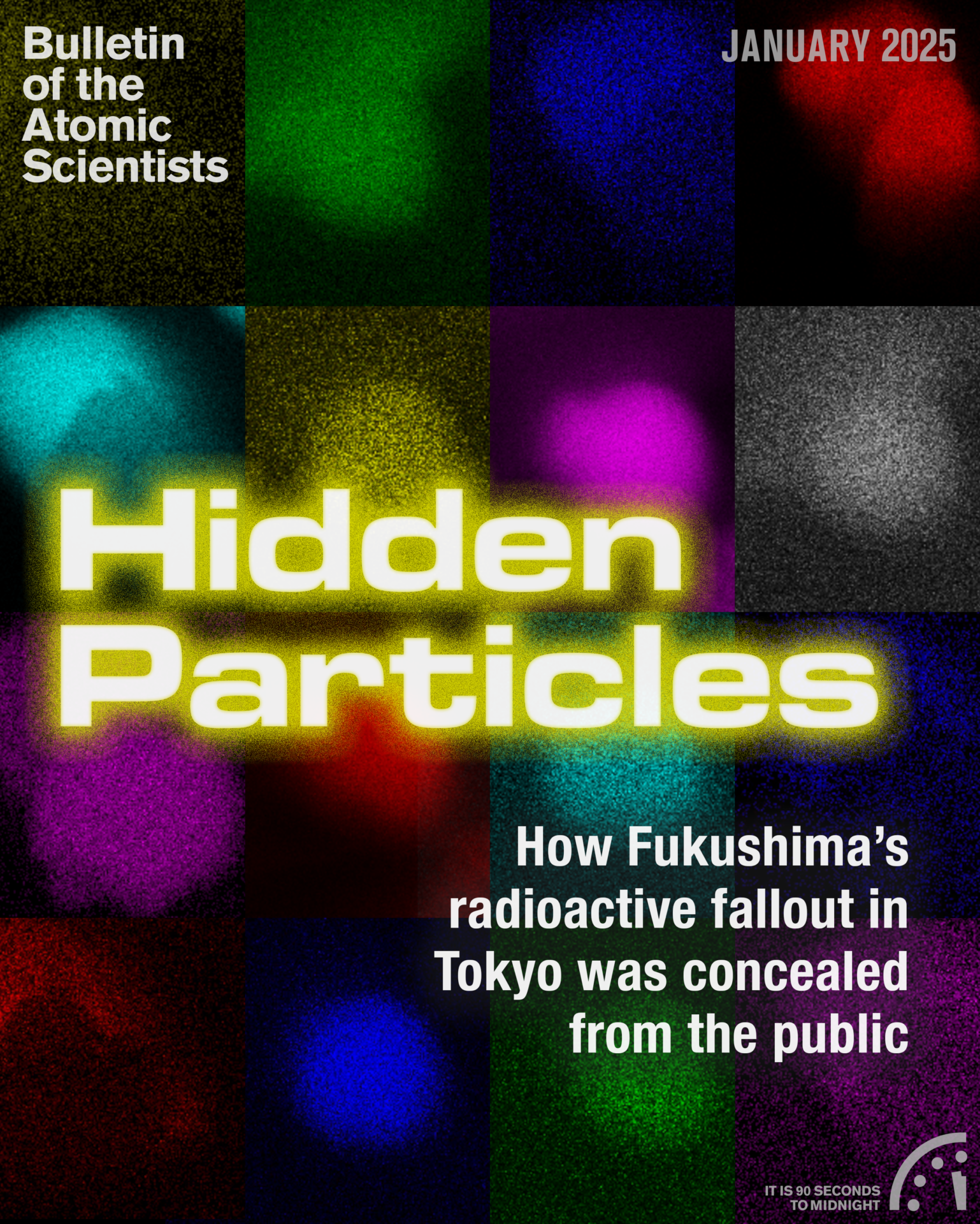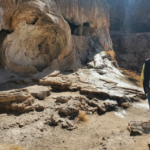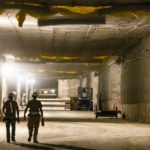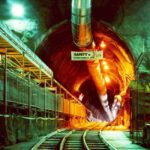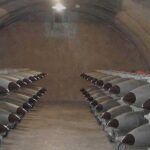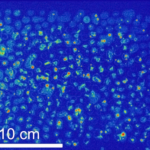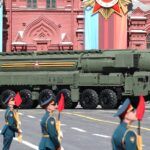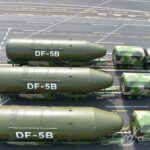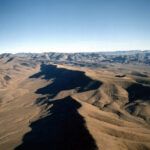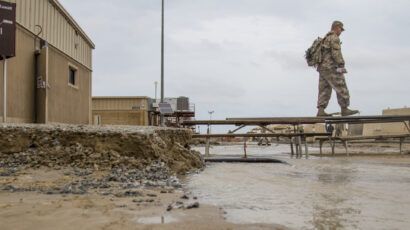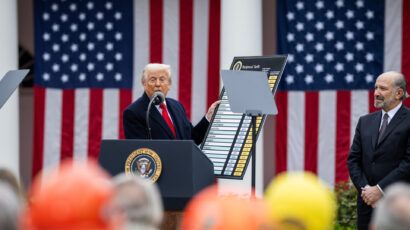Amended Record of Decision: Idaho High-Level Waste and Facilities Disposition Final Environmental Impact Statement (DOE/EIS-0287), December 21, 2009. https://www.federalregister.gov/documents/2010/01/04/E9-31151/amended-record-of-decision-idaho-high-level-waste-and-facilities-disposition-final-environmental
Amoroso, J., Marra, J., Conradson, S.D., Tang, M. and Brinkman, K. (2014) Melt processed single phase hollandite waste forms for nuclear waste immobilization: Ba1.0Cs0.3A2.3Ti5.7O16; A= Cr, Fe, Al. Journal of alloys and compounds, 584, 590-599. https://doi.org/10.1016/j.jallcom.2013.09.087
Asmussen, R.M., Turner, J., Chong, S. and Riley, B.J. (2022) Review of recent developments in iodine wasteform production. Frontiers in Chemistry, 10, 1043653. https://doi.org/10.3389/fchem.2022.1043653
Benson, S.M., Ewing, R.C., Davies, P., Engstrom, S., Grambow, B., Kessler, J., Macfarlane, A., Metlay, D., Peters, M., Poinssot, C., Whipple, C., and Shaver, K. (2018) Reset of America’s Nuclear Waste Management: Strategy and Policy. Center for International Security and Cooperation, Stanford University. https://fsi.stanford.edu/publication/reset-america%E2%80%99s-nuclear-waste-management-strategy-and-policies
Bernadzikowski, T.A., Allender, J.S., Butler, J.L., Gordon, D.E., and Stone, J.A. (1982) The evaluation and selection of candidate high level waste forms. USDOE/TIC-11611, U.S. Department of Energy, Aiken, SC. https://www.osti.gov/biblio/5258709
Bonano, E.J., Price, L.L., and Sassani, D. (2023) Assessment of the Back End of Advanced Nuclear Reactors for Developing Stable Waste Forms. paper 23452, Waste Management 23 (WM’23), Phoenix, AZ, USA, Feb 26 – Mar 2.
Bruno, J., and Ewing, R.C. (2006) Spent Nuclear Fuel. Elements, 2, 343-349. https://doi.org/10.2113/gselements.2.6.343
Carter, L.J. (1979) Academy Squabbles over Radwaste Report: Chairman of waste solidification panel is indignant at academy officials’ decision not to publish what Handler calls a” flawed” document. Science, 205, 287-289.https://doi.org/10.1126/science.205.4403.287
Case, J.T., Johnson, H.C., Brouns, T.M., Marra, J.E., Roach, J.A., and Suggs, P.C. (2016) Independent Analysis of Alternatives for Disposition of the Idaho Calcined High-Level Waste Inventory. US Department of Energy, Washington, D.C. https://www.energy.gov/sites/prod/files/2019/06/f64/Volume%201%20Calcine%20AoA%20Final%2004-19-16%20w_signatures.pdf
Caurant, D., Loiseau, P., Majerus, O., Aubin-Chevaldonnet, V., Bardez, I., and Quintas, A. (2009) Glasses, Glass-Ceramics and Ceramics for Immobilization of Highly Radioactive Nuclear Wastes. Nova Science Publishers, Inc., New York.
Chakoumakos, B.C., Murakami, T., Lumpkin, G.R. and Ewing, R.C. (1987) Alpha-decay—Induced fracturing in zircon: The transition from the crystalline to the metamict state. Science, 236, 1556-1559. https://doi.org/10.1126/science.236.4808.1556
Cheung, H., Edwards, L., Harvey, T., and Revelli, M. (1982) Postclosure risks of alternative SRP nuclear waste forms in geologic repositories (No. UCRL-53269). Lawrence Livermore National Lab.(LLNL), Livermore, CA (United States). https://www.osti.gov/biblio/5362437
Chew, D.P., Hamm, B.A., and Wells, M.N. (2019) Liquid Waste System Plan. SRR-LWP-2009-00001, Rev. 21, Savannah River Remediation, LLC, Aiken, SC. https://www.energy.gov/srs/liquid-waste-system-plans
Corkhill, C.L., Haigh, L.T., Blackburn, L.R., Townsend, L.T., Bailey, D.J., Mottram, L.M., Mason, A.R., Cole, M.R., Gervais, T., and Kerboul, G. (2024) Demonstration of industrially-fabricated plutonium disposition MOX. Journal of Nuclear Materials, 155477. https://doi.org/10.1016/j.jnucmat.2024.155477
Damette, G., Merlin, S., and Vigreux, B. (1985) Vitrification of high-level radwaste in France. Nuclear Europe 5, 11-16. https://inis.iaea.org/search/search.aspx?orig_q=RN:17055609
Dolzikova, D. (2016) Who killed the US-Russia plutonium agreement, and does it really matter? The Bulletin of the Atomic Scientists, December 1, 2016, https://thebulletin.org/2016/12/who-killed-the-us-russia-plutonium-agreement-and-does-it-really-matter/#post-heading
Donald, I.W. (2010) Waste Immobilization in Glass and Ceramic Based Hosts: Radioactive, Toxic, and Hazardous Wastes. Wiley, Chichester, West Sussex. https://onlinelibrary.wiley.com/doi/book/10.1002/9781444319354?msockid=3742d05de8cc6e0f01a0c57de9fe6f57
Donald, I.W., Metcalfe, B.L., and Taylor, R.N.J. (1997) The immobilization of high level radioactive wastes using ceramics and glasses. Journal of Materials Science, 32, 5851-5887. https://link.springer.com/article/10.1023/A:1018646507438
Dunson Jr, J.B., Eisenberg, A.M., Schuyler III, R.L., Haight Jr, H.G., Mello, V.E., Gould Jr, T.H., Butler, J.L., and Pickett, J.B. (1982) Assessment of processes, facilities, and costs for alternative solid forms for immobilization of SRP defense waste (No. DP–1625). Du Pont de Nemours (EI) and Co. https://inis.iaea.org/search/search.aspx?orig_q=RN:14720831
Ewing, Rodney C. 1974. “Spherulitic Recrystallization of Metamict Polycrase.” Science 184 (4136): 561-562. https://doi.org/10.1126/science.184.4136.561
Ewing, R.C. (1976) Metamict Mineral Alteration: An Implication for Radioactive Waste Disposal. Science, 192, 1336-1337. https://doi.org/10.1126/science.192.4246.1336
Ewing, R.C. (1979) Natural Glasses: Analogues for Radioactive Waste Forms. In G.J. McCarthy, R.L. Schwoebel, R.W. Potter, A.M. Friedman, J.G. Moore, H.C. Burkholder, and W. Lutze, Eds. Scientific Basis for Nuclear Waste Management I, p. 57-68. Materials Research Society and Plenum Press, New York. https://doi.org/10.1007/978-1-4615-9107-8_7
Ewing, R.C., and Haaker, R.F. (1980) The metamict state: Implications for radiation damage in crystalline waste forms. Nuclear and Chemical Waste Management, 1, 51-57. https://doi.org/10.1016/0191-815X(80)90028-5
Ewing, R.C., Chakoumakos, B.C., Lumpkin, G.R., and Murakami, T. (1987) The Metamict State. MRS Bulletin, 12, 58-66. https://doi.org/10.1557/S0883769400067865
Ewing, R.C., Weber, W.J., and Clinard Jr, F.W. (1995) Radiation effects in nuclear waste forms for high-level radioactive waste. Progress in Nuclear Energy, 29, 63-127. https://doi.org/10.1016/0149-1970(94)00016-Y
Ewing, R.C., Lutze, W., and Weber, W.J. (1995) Zircon: A host-phase for the disposal of weapons plutonium. Journal of Materials Research, 10, 243-246. https://doi.org/10.1557/JMR.1995.0243
Ewing, R.C., Lutze, W., and Weber, W.J. (1996) Method of immobilizing weapons plutonium to provide a durable, disposable waste product, US Patent # 5,545,797, filed January 13, 1995, and issued August 13, 1996. US-5545797-A – Patent Public Search | USPTO
Ewing, R.C. (1999) Nuclear waste forms for actinides. Proceedings of the National Academy of Sciences, 96, 3432-3439. https://doi.org/10.1073/pnas.96.7.3432
Ewing, R.C. (2001) The design and evaluation of nuclear-waste forms: clues from mineralogy. The Canadian Mineralogist 39, 697-715. https://doi.org/10.2113/gscanmin.39.3.697
Ewing, R.C., and Weber, W.J. (2001) Preventing Radioactive Contamination. U.S. Department of Energy, Office of Science. https://science.osti.gov/bes/Community-Resources/Accomplishments/Discoveries#13
Ewing, R.C., Weber, W.J., and Lian, J. (2004) Nuclear Waste Disposal – Pyrochlore (A2B2O7): A Nuclear Waste Form for the Immobilization of Plutonium and the “Minor” Actinides. Journal of Applied Physics 95, 5949-5971. https://doi.org/10.1063/1.1707213
Ewing, R. C., Weber, W. J., (2011) Actinide Waste Forms and Radiation Effects. In The Chemistry of the Actinides and Transactinide Elements; Morss, L. R., Edelstein, N. M., Fuger, J., Eds.; Springer: New York, Vols. 1–6, 3813–3888. https://doi.org/10.1007/978-94-007-0211-0_35
Ewing, R.C., Whittleston, R.A., and Yardley, B.W.D. (2016) Geological disposal of nuclear waste: a primer. Elements, 12, 233-237. https://doi.org/10.2113/gselements.12.4.233
Ewing, R.C. (2021) Reflections of a Scientist Laboring in the Nuclear Waste Field. Groundwater, 59, 154-155. https://doi.org/10.1111/gwat.13058
Farzana, R., Dayal, P., Peristyy, A., Sutton, P., Aly, Z., Aughterson, R.D., Nguyen, T.H., Yeoh, M., Koshy, P., and Gregg, D.J. (2023) Effect of Ti‐metal addition on hot‐isostatically pressed (HIPed) Synroc‐C. Journal of the American Ceramic Society, 106, 6971-6986. https://doi.org/10.1111/jace.19313
Garmon, L. (1981) The box within a box within a box. Science News 120, 396-399. https://www.sciencenews.org/archive/box-within-box-within-box
Gin, S., Abdelouas, A., Criscenti, L.J., Ebert, W.L., Ferrand, K., Geisler, T., Harrison, M.T., Inagaki, Y., Mitsui, S., Mueller, K.T., and Marra, J.C. (2013) An international initiative on long-term behavior of high-level nuclear waste glass. Materials Today, 16(6), 243-248. https://doi.org/10.1016/j.mattod.2013.06.008
Grambow B. (1985) A general rate equation for nuclear waste glass corrosion. Mater. Res. Soc. Symp. Proc. 44, 15–27. https://doi.org/10.1557/PROC-44-15
Grambow, B., Jercinovic, M.J., Ewing, R.C., and Byers, C.D. (1985) Weathered basalt glass: a natural analogue for the effects of reaction progress on nuclear waste glass alteration. MRS Online Proceedings Library (OPL), 50, 263. https://doi.org/10.1557/PROC-50-263
Gregg, D.J., Farzana, R., Dayal, P., Holmes, R. and Triani, G. (2020a) Synroc technology: Perspectives and current status. Journal of the American Ceramic Society, 103, 5424-5441. https://doi.org/10.1111/jace.17322
Gregg, D.J., Vance, E.R., Dayal, P., Farzana, R., Aly, Z., Holmes, R. and Triani, G. (2020b) Hot Isostatically Pressed (HIPed) fluorite glass‐ceramic waste forms for fluoride molten salt wastes. Journal of the American Ceramic Society, 103, 5454-5469. https://doi.org/10.1111/jace.17293
Haaker. R.F., and Ewing, R.C. (1981) Naturally occurring crystalline phases: analogues for radioactive waste forms. Pacific Northwest Lab. (Richland, Washington), PNL-3505/UC-70. https://doi.org/10.2172/6484307
Hannum, W.H. (1983) Analysis of the terminal waste form selection for the West Valley Demonstration Project (No. DOE/NE/44139-T3). West Valley Nuclear Services Co., Inc., West Valley, NY (USA). https://www.osti.gov/biblio/6262264
Hatch, L.P. (1953) Ultimate disposal of radioactive wastes. American Scientist, 41, 410-421. https://www.osti.gov/biblio/4374317
Hench, L.L. et al. (1979) Alternative Waste Form Peer Review Panel. The evaluation and review of alternative waste forms for immobilization of high-level radioactive wastes, Report number 1. DOE/TIC-10228, U.S. Department of Energy, Washington, D.C. https://doi.org/10.2172/5840681
Hench, L.L. et al. (1980) Alternative Waste Form Peer Review Panel. The evaluation and review of alternative waste forms for immobilization of high-level radioactive wastes, Report Number 2. DOE/TIC-11219, U.S. Department of Energy, Washington, D.C. https://doi.org/10.2172/5168824
Hench, L.L. et al. (1981) Alternative Waste Form Peer Review Panel. The Evaluation and review of alternative waste forms for immobilization of high level radioactive wastes, Report Number 3. DOE/TIC-11472, U.S. Department of Energy, Washington, D.C. https://www.osti.gov/biblio/6319956
International Atomic Energy Agency. (2009) Classification of Radioactive Waste. GSG-1, IAEA. https://www.iaea.org/publications/8154/classification-of-radioactive-waste
International Atomic Energy Agency. (2019) Waste from Innovative Types of Reactors and Fuel Cycles. IAEA Nuclear Energy Series No. NW-T-1.7. https://www.iaea.org/publications/12226/waste-from-innovative-types-of-reactors-and-fuel-cycles
International Atomic Energy Agency. (2022) Status and trends in spent fuel and radioactive waste management. No. NW-T-1.14 (Rev. 1). https://www.iaea.org/publications/14739/status-and-trends-in-spent-fuel-and-radioactive-waste-management
Kerr, R.A. (1979) Nuclear Waste Disposal: Alternatives to Solidification in Glass Proposed: But glass is still seen as a reasonable solution in the interim. Science, 204, 289-291. https://doi.org/10.1126/science.204.4390.289
Krall, L.M., Macfarlane, A.M., and Ewing, R.C. (2022) Nuclear waste from small modular reactors. Proceedings of the National Academy of Sciences, 119, 2111833119. https://doi.org/10.1073/pnas.2111833119
Lewis, M.A., Fischer, D.F., and Smith, L.J. (1993) Salt‐occluded zeolites as an immobilization matrix for chloride waste salt. Journal of the American Ceramic Society, 76, 2826-2832. https://doi.org/10.1111/j.1151-2916.1993.tb04023.x
Lubkin, A. (2017) Plutonium Management and Disposition in the United States: History and Analysis of the Program [Interschool Honors Program in International Security Studies, Theses, Stanford University, Center for International Security and Cooperation]. http://purl.stanford.edu/cn721tt3529
Lumpkin, G.R., and Ewing, R.C. (1988) Alpha-decay damage in minerals of the pyrochlore group. Physics and Chemistry of Minerals, 16, 2-20. https://doi.org/10.1007/BF00201325
Lutze, W., Grambow, B., and Ewing, R.C. (1990) Performance of borosilicate glass, synroc and spent fuel as nuclear waste forms. Waste Management, 847-851. https://inis.iaea.org/search/search.aspx?orig_q=RN:22004998
Lutze, W., and Ewing, R.C. (1988) Radioactive waste forms for the future. https://doi.org/10.1557/S0883769400060280
Lutze, W., Malow, G., Ewing, R.C., Jercinovic, M.J., and Keil, K. (1985) Alteration of basalt glasses: implications for modelling the long-term stability of nuclear waste glasses. Nature, 314, 252-255. https://doi.org/10.1038/314252a0
Macfarlane, A. (1998) Immobilization of Excess Weapon Plutonium: A Better Alternative to Glass, Science & Global Security, 7, 271-309. https://doi.org/10.1080/08929889808426463
Macfarlane, A., von Hippel, F., Kang, J., and Nelson, R. (2001) Plutonium disposal, the third way. Bulletin of the Atomic Scientists, 57, 53-57. https://doi.org/10.2968/057003015
Malow, G., Marples, J.A.C., and Sombret, C. (1980). Radioactive Waste Management and Disposal, edited by R. Simon and S. Orlowski, 341.
Malow, G., Lutze, W., and Ewing, R.C. (1984) Alteration effects and leach rates of basaltic glasses: Implications for the long-term stability of nuclear waste form borosilicate glasses. Journal of Non-Crystalline Solids, 67, 305-321. https://doi.org/10.1016/0022-3093(84)90156-X
McCarthy, G.J. (1977) High-level waste ceramics: Materials considerations, process simulation, and product characterization. Nucl Technol., 32, 92–105. https://doi.org/10.13182/NT77-A31741
McCarthy, G.J., White, W.B., and Pfoertsch, D.E. (1978) Synthesis of nuclear waste monazites, ideal actinide hosts for geologic disposal. Materials Research Bulletin 13, 1239-1245. https://doi.org/10.1016/0025-5408(78)90215-5
McCloy, J., and Goel, A. (2017) Glass-ceramics for nuclear-waste immobilization. MRS Bulletin, 42, 233-240. https://doi.org/10.1557/mrs.2017.8
Morss, L.R., Stanley, M.L., Tatko, C.D., and Ebert, W.L. (1999) Corrosion of glass-bonded sodalite as a function of pH and temperature. MRS Online Proceedings Library, 608, 733-738. https://doi.org/10.1557/PROC-608-733
Murakami, T., Chakoumakos, B.C., Ewing, R.C., Lumpkin, G.R., and Weber, W.J. (1991) Alpha-decay event damage in zircon. American Mineralogist, 76, 1510-1532. https://pubs.geoscienceworld.org/msa/ammin/article/76/9-10/1510/105147/Alpha-decay-event-damage-in-zircon
National Nuclear Security Administration (2024) NNSA issues final Surplus Plutonium Disposition Program Environmental Impact Statement. https://www.energy.gov/nnsa/articles/nnsa-issues-final-surplus-plutonium-disposition-program-environmental-impact
National Research Council (1994) Management and Disposition of Excess Weapons Plutonium, National Academy of Sciences, Washington, DC. https://doi.org/10.17226/2345
National Research Council (2000) Alternative High-Level Waste Treatments at the Idaho National Engineering and Environmental Laboratory. Academy of Science, Washington, D.C. https://nap.nationalacademies.org/read/9743/chapter/1
National Research Council, Committee on Waste Forms Technology and Performance. (2011) Waste forms technology and performance: final report. National Academy of Sciences, Washington, DC. https://nap.nationalacademies.org/catalog/13100/waste-forms-technology-and-performance-final-report
Ojovan, M.I., and Lee, W.E. (2005) An Introduction to Nuclear Waste Immobilisation. Elsevier Science, Amsterdam. https://doi.org/10.1016/B978-0-08-044462-8.X5000-5
Oversby, V.M., McPheeters, C.C., Degueldre, C., and Paratte, J.M. (1997) Control of civilian plutonium inventories using burning in a non-fertile fuel. Journal of Nuclear Materials, 245, 17-26. https://doi.org/10.1016/S0022-3115(96)00751-9
Palmer, R.A., Houston, H.M., and Misercola, A.J. (2006) Completion of the vitrification campaign at the West Valley Demonstration Project. Environmental Issues and Waste Management Technologies in the Ceramic and Nuclear Industries IX, 155, pp.177-196. https://doi.org/10.1002/9781118407004.ch18
Post, R.G. (1981) Independent Evaluation of Candidate Alternative ICPP High-Level Waste Forms. doc ENICO-1088, table IV. Nuclear Idaho Company, Idaho Falls, ID.
Riley, B.J., Vienna, J.D., Strachan, D.M., McCloy, J.S., and Jerden Jr, J.L. (2016) Materials and processes for the effective capture and immobilization of radioiodine: A review. Journal of Nuclear Materials, 470, 307-326. https://doi.org/10.1016/j.jnucmat.2015.11.038
Ringwood, A.E. (1978) Safe Disposal of High-Level Nuclear Reactor Wastes: a New Strategy. Australian National University Press, Canberra, Australia. https://openresearch-repository.anu.edu.au/server/api/core/bitstreams/d77c9eab-fed6-4c15-b0ef-871d6c276b41/content
Ringwood, A.E., Kesson, S.E., Ware, N.G., Hibberson, W., and Major, A. (1979) Immobilisation of high level nuclear reactor wastes in SYNROC. Nature 278, 219-223. https://doi.org/10.1038/278219a0
Roy R. (1977) Rational molecular engineering of ceramic materials. Journal of the American Ceramic Society, 60, 350–363. https://doi.org/10.1111/j.1151-2916.1977.tb15559.x
Routbort, J.L., Offermann, P., and Matzke, H. (1982) Mechanical Stability of a Cm-Doped Celsian Glass-Ceramic. MRS Online Proceedings Library 15, 415–422. https://doi.org/10.1557/PROC-15-415
Schubick, A.J., Bergmann, L.M., Hohl, T.M., Jasper, R.T., McMullin, J., Pak, K.T., Smith, G.V., Zaher, U.E., Reaksecker, S.D., and Weld, S.L. (2023) River Protection Project System Plan. ORP-11242, Rev. 10, U.S. Department of Energy, Office of River Protection, Richland, WA.
Schulz, W.W., Beary, M.M., Gallagher, S.A., Higley, B.A., Johnston, R.G., Jungfleisch, F.M., Kupfer, M.J., Palmer, R.A., Watrous, R.A., and Wolf, G.A. (1980) Preliminary evaluation of alternative forms for immobilization of Hanford high-level defense wastes (No. RHO-ST-32). Rockwell International Corp., Canoga Park, CA (USA). Energy Systems Group. https://www.osti.gov/biblio/6776148
Stone, J.A., Goforth Jr, S.T., and Smith, P.K. (1979) Preliminary Evaluation of Alternative Forms for Immobilization of Savannah River Plant High-Level Waste (No. DP–1545). Du Pont de Nemours (EI) and Co. https://inis.iaea.org/search/search.aspx?orig_q=RN:11528989
Stone, J.A., and Allender, J.S. (1982) Comparison of properties of borosilicate glass and crystalline ceramic forms for immobilization of Savannah River Plant waste (No. DP-1627). Du Pont de Nemours (EI) and Co., Aiken, SC (United States). Savannah River Lab. https://www.osti.gov/biblio/5196204
Turcotte, R.P., Wald, J.W., Roberts, F.P., Rusin, J.M., and Lutze, W. (1982) Radiation damage in nuclear waste ceramics. Journal of the American Ceramic Society, 65, 589-593. https://doi.org/10.1111/j.1151-2916.1982.tb09934.x
US Department of Energy (1982a) Final Environmental Impact Statement: Defense Waste Processing Facility, Savannah River Plant, Aiken, SC. DOE/EIS-0082, U.S. Department of Energy, Washington, D.C.
US Department of Energy (1982b) Final Environmental Impact Statement, Long-Term Management of Liquid High-Level Radioactive Waste Stored at the Western New York Nuclear Service Center, West Valley. DOE/EIS-00810, U.S. Department of Energy, Washington, D.C.
US Department of Energy (1982c) Defense Waste Processing Facility, Savannah River Plant, Aiken, S.C.; Record of Decision. Federal Register, Vol. 47, No. 105: 23801-23803, Washington, D.C.
US Department of Energy (1987) Final Environmental Impact Statement Disposal of Hanford Defense High-Level, Transuranic and Tank Wastes Hanford Site Richland, Washington. DOE/EIS-0113, U.S. Department of Energy, Washington, D.C.
US Department of Energy (1990) Evaluation and Selection of Borosilicate Glass as the Waste Form for Hanford High-Level Radioactive Waste. DOE/RL-90-27, U.S. Department of Energy, Richland Operations Office, Richland, WA.
US Department of Energy (2002a) Surplus Plutonium Disposition Program, Record of Decision, Federal Register, 02-9658 (67 FR 19432). https://www.federalregister.gov/documents/2002/04/19/02-9658/surplus-plutonium-disposition-program
US Department of Energy (2002b) Idaho High-Level Waste and Facilities Disposition Final Environmental Impact Statement, U. S. Department of Energy, Idaho Falls, ID.
US Department of Energy (2009) Amended Record of Decision: Idaho High-Level Waste and Facilities Disposition Final Environmental Impact Statement Revised by State 12/21/09. Federal Register Doc. E9–31151, U.S. Department of Energy, Washington, D.C.
US Nuclear Waste Technical Review Board. (2024) Status of repository programs for disposal of spent nuclear fuel and high-level radioactive waste.
Vance, E.R., Hart, K.P., Carter, M.L., Hambley, M.J., Day, R.A. and Begg, B.D. (1997) Further studies of Synroc immobilization of HLW sludges and Tc for Hanford tank waste remediation. MRS Online Proceedings Library (OPL), 506, 289. https://doi.org/10.1557/PROC-506-289
Vance, E.R., Jostsons, A., Moricca, S. and Stewart, M. (1998) Synroc derivatives for excess weapons plutonium. Ceramic Transactions, 323-329.
Vance, E.R., Davis, J., Olufson, K., Chironi, I., Karatchevtseva, I., and Farnan, A.I. (2012) Candidate waste forms for immobilisation of waste chloride salt from pyroprocessing of spent nuclear fuel. Journal of Nuclear Materials, 420, 396-404. https://doi.org/10.1016/j.jnucmat.2011.09.020
Wang, S.X., Begg, B.D., Wang, L.M., Ewing, R.C., Weber, W.J., and Kutty, K.G. (1999) Radiation stability of gadolinium zirconate: a waste form for plutonium disposition. Journal of Materials Research, 14, 4470-4473. https://doi:10.1557/JMR.1999.0606
Warner, J.K., and Ewing, R.C. (1993) Crystal chemistry of samarskite. American Mineralogist, 78, 419-424. https://pubs.geoscienceworld.org/msa/ammin/article-abstract/78/3-4/419/42751/Crystal-chemistry-of-samarskite
Weber, W.J., Ewing, R.C., and Wang, L.M. (1994) The radiation-induced crystalline-to-amorphous transition in zircon. Journal of Materials Research, 9, 688-698. https://doi:10.1557/JMR.1994.0688
Weber, W.J., Ewing, R.C., Angell, C.A., Arnold, G.W., Cormack, A.N., Delaye, J.M., Griscom, D.L., Hobbs, L.W., Navrotsky, A., Price, D.L., Stoneham, A.M., and Weinberg, M.C. (1997) Radiation effects in glasses used for immobilization of high-level waste and plutonium disposition. Journal of Material Research, 12, 1946-1978. https://doi.org/10.1557/JMR.1997.0266
Weber, W.J., Ewing, R.C., and Meldrum, A. (1997) The kinetics of alpha-decay-induced amorphization in zircon and apatite containing weapons-grade plutonium or other actinides. Journal of Nuclear Materials, 250, 147-155. https://doi.org/10.1016/S0022-3115(97)00271-7
Weber, W.J., Ewing, R.C., Catlow, C.R.A., De La Rubia, T.D., Hobbs, L.W., Kinoshita, C., Motta, A.T., Nastasi, M., Salje, E.K.H., Vance, E.R., and Zinkle, S.J. (1998) Radiation effects in crystalline ceramics for the immobilization of high-level nuclear waste and plutonium. Journal of Materials Research, 13, 1434-1484. https://doi:10.1557/JMR.1998.0205
Weber, W.J., and Ewing, R.C. (2002) Radiation effects in crystalline oxide host phases for the immobilization of actinides. In Scientific Basis for Nuclear Waste Management XXV – MRS Online Proceedings Library 713, edited by B. P. McGrail and G. A. Cragnolino, 443-454. Mater. Res. Soc. Symp. Proc. 713, Warrendale, PA: Materials Research Society. https://doi:10.1557/PROC-713-JJ3.1
Weber, William J., Rodney C. Ewing, E. R. Vance, Daniel Gregg, Sylvain Peuget, and Thierry Wiss. 2019. “Chapter 30: Plutonium in Waste Forms.” In Plutonium Handbook (2nd Edition), Vol. 5, edited by David L. Clark, David A. Geeson, and Robert J. Hanrahan, Jr. 2349-2421. Grange Park, IL, American Nuclear Society.
Zhang, Y., Kong, L., Ionescu, M., and Gregg, D.J. (2022) Current advances on titanate glass-ceramic composite materials as waste forms for actinide immobilization: A technical review. Journal of the European Ceramic Society, 42, 1852-1876. https://doi.org/10.1016/j.jeurceramsoc.2021.12.077
Zhang, Y., Gregg, D.J., Kong, L., Jovanovich, M., and Triani, G. (2017) Zirconolite glass-ceramics for plutonium immobilization: The effects of processing redox conditions on charge compensation and durability. Journal of Nuclear Materials, 490, 238-241. https://doi.org/10.1016/j.jnucmat.2017.04.015






